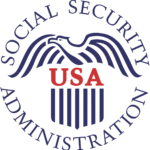Should strategic planning take six months or six hours?
Spoiler alert…as you probably guessed, the answer is it depends…on a lot of things.
About ten years ago, I was working for a nonprofit and serving with two others in a board capacity. My Thursdays were dedicated to galas and my Saturdays to strategic planning sessions. A half-day of my weekend seemed like a small investment for the assurance that an organization I cared about would move in a synchronized swimming fashion toward absolute success over the next five to ten years. In reality, a lot of weekend time was spent talking over each other as someone furiously jotted our thoughts onto a flipchart or white board. Our great takeaways ended up living on the director’s digital camera or those giant post-it notes in a closet. The good news? These half-day investments cost us only $500! That’s right. Every foundation, club, and nonprofit retiree was willing to host a strategy session for the low low cost of $500. Half a grand and half a day for a decade’s worth of strategy!
Jump ahead to today…I work with national organizations that spend 3–6 months on their strategic plans as well as community-based organizations that struggle to coordinate a one-day, one-time gathering for the same purpose. So, which is better? Do the big guys have this figured out and the grassroots organizations need to get on board? Not exactly.
Do you need a map or a destination?
Often, organizations have a well-defined vision of where they want to go. Whether it’s the growth of existing programs or perhaps a new building. What they’re missing is a strategy to get there. On the other hand, your organization might not have a clear objective in mind OR (more common) it might have multiple objectives. Determining what to pursue when is necessary for a strategic plan.
Providing a map is much easier than helping determine a destination and then building a map. A one-day session can often help teams articulate and document the steps necessary to achieve their goals. Determining a destination will often require research (see below) and a longer engagement.
Research Requires Time
I’ll be the first to admit that as a nonprofit leader, it’s easy to fall under the illusion that I know best or that my vision should singularly guide the organization. Sure, I might need a consultant to help get the board on board, but I know where we’re going! The thing is, as a nonprofit leader, you’re not the owner. Even if you’re the founder, you created a community-owned entity. You owe it to them to get their input. Great strategies are built on insight from the community you serve, not just the internal team and board. Focus groups, interviews, and surveys are all necessary to build a well-rounded strategy.
When faced with multiple opportunities, due diligence is required to help your organization make the wisest choice. Proceeding without asking and answering the right questions can lead to mission drift, financial risk and burnout. At their fastest pace, solid research initiatives still take months to schedule, complete and analyze, but the return on investment is significant.
Add-ons Add Time
There are a lot of items that are often lumped together with strategic planning. Not a bad thing, necessarily, but these “add-ons” often cause organizations to need longer planning periods. Items like board training, creation or revision of identity statements, i.e., core values or a vision statement, and team building activities are not strategic planning. They are, however, critical to good strategy. If you know these items are needing an update it’s best to plan for additional time so they’re not addressed in a rush or skipped altogether.
Actionable Plans are Shorter-Term and Require Less Time
A major casualty seldom reported from the COVID-19 Pandemic was the catastrophic end to millions of strategic plans. No one saw it coming. No one had a “Pandemic Contingency Plan” in the appendix of their organization’s strategy documents. A silver lining of this tragedy was that we started to get more realistic about what we could plan for. Do you even plan to work for the same nonprofit in ten years? Will any of your current board members still be serving? Is it right to make plans for people who aren’t in the room to execute upon?
While I still receive plenty of RFPs for long-term plans, most organizations recognize the wisdom in planning for a shorter period of time. This shorter goal also allows for a shorter planning period.
A Closing Thought: The Water Analogy
Health experts recommend we drink at least 8-8oz glasses of water each day. That’s a lot. Especially for those of us who consume the majority of their daily liquids via the coffee cup. I rarely drink even two glasses of water per day, but that doesn’t diminish the health benefits of those two glasses.
You may not be able to make an investment in a multi-month strategic planning process that includes research and all the bells and whistles. If that is the case, there is a still value in a half-day session! If that is what you can gather your board for, start there. The level-setting of time in a room with a focus of alignment around your yearly objectives is never time wasted.


 USDA
USDA HUD
HUD Social Security
Social Security
Recent Comments